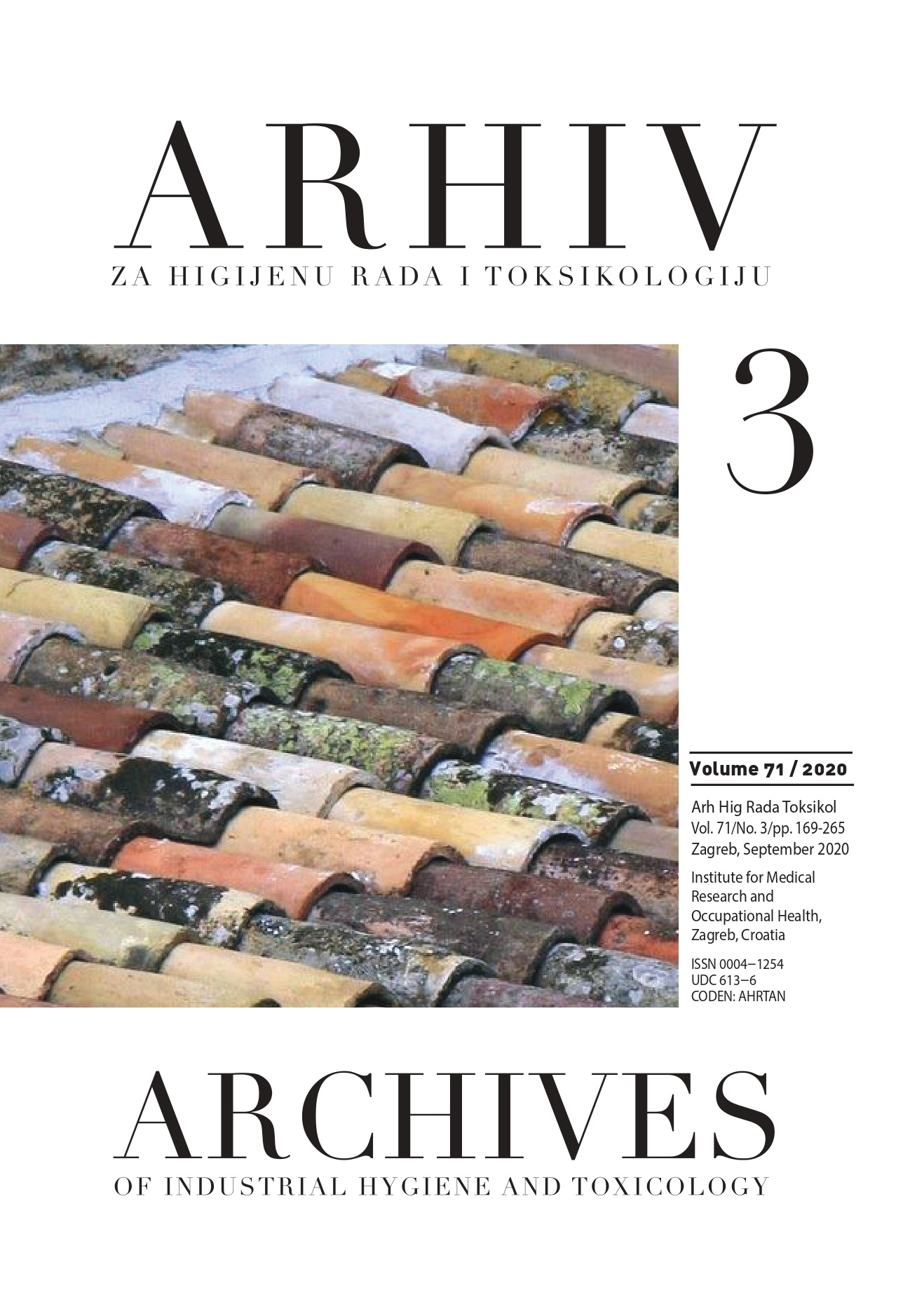Microtubular structure impairment after GSM-modulated RF radiation exposure
DOI:
https://doi.org/10.2478/aiht-2020-71-3267Keywords:
915 MHz, cell growth, cytoskeleton, in vitro, mobile phone radiationAbstract
The objective of the study was to investigate whether low-level 915 MHz GSM-modulated radiofrequency (RF) radiation impairs microtubular structure and affects normal cell growth. V79 cells were exposed to a GSM-modulated field in a Gigahertz Transversal Electromagnetic Mode cell (GTEM cell) for 1, 2, and 3 h. Signal generator combined with power and chip modulator generated the electromagnetic field (EMF). The electric field strength was adjusted to 10, 20, and 30 V/m, and the average specific absorption rate (SAR) was calculated to be 0.23, 0.8, and 1.6 W/kg. The structure of microtubule proteins was assessed by indirect immunocytochemistry, and cell growth was determined based on cell counts taken every day over six post-exposure days. Three-hour radiation exposure significantly altered microtubule structure regardless of the electric field strength. Moreover, on the third post-exposure day, three-hour radiation significantly reduced cell growth, regardless of field strength. The same was observed with two-hour exposure at 20 and 30 V/m. In conclusion, 915 MHz GSM-modulated RF radiation affects microtubular proteins in a time-dependent manner, which, in turn, affects cell proliferation. Our future research will focus on microtubule structure throughout the cell cycle and RF radiation effects on mitotic spindle.














